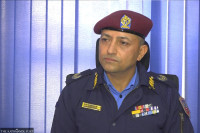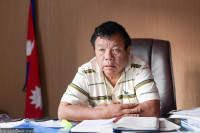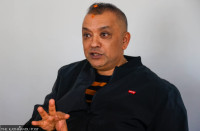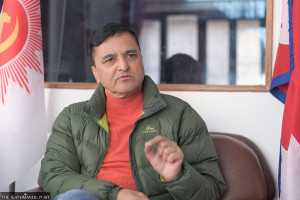Interviews
‘In policing, gender does not matter’
The new head of Kathmandu Valley Traffic Police Deputy Inspector General Mira Chaudhari plans to introduce stringent vehicle operation mechanisms to conduct hassle-free traffic operations.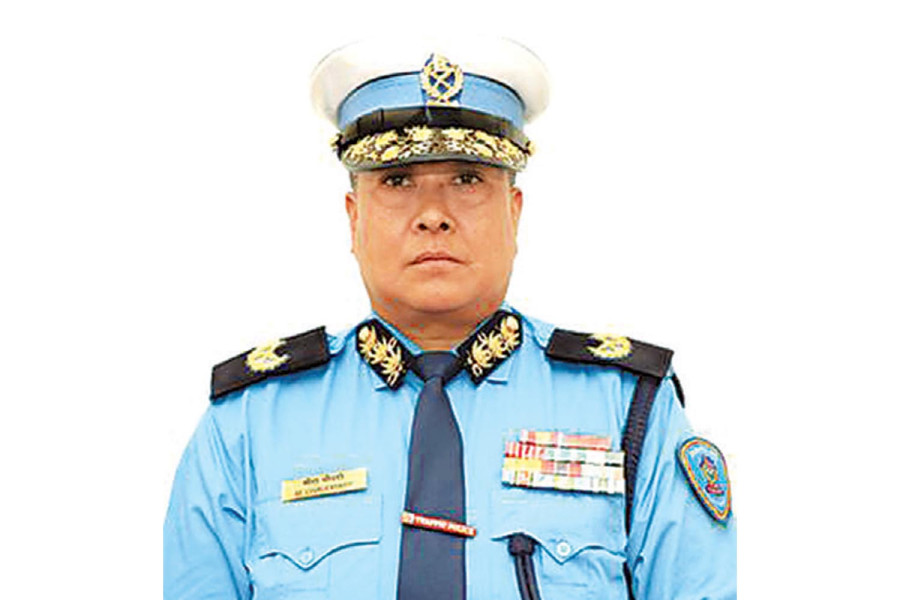
Anup Ojha
On Thursday, former chief of Kathmandu Valley Traffic Police Office, Umesh Raj Joshi, handed over the reins to Deputy Inspector General Mira Chaudhari, who became the first woman in Nepal to hold the position. Both Joshi and Chaudhary were among the 17 Senior Superintendents of Police (SSP) to have been promoted to the rank of DIG on July 22.
The Kathmandu Valley Traffic Police oversees the traffic offices of the Kathmandu, Lalitpur and Bhaktapur districts. Prior to this, Chaudhari served as chief of the police training centre of Province 1 in Biratnagar.
Originally from Birgunj Metropolitan City’s ward 13, Chaudhari has a Master’s degree in History, a Bachelor’s of Arts in Legislative of Laws (B.A.LL.B), and a Bachelor’s degree in Education.
Kathmandu Valley is notorious for traffic congestion. The roads are choked with vehicles daily inconveniencing millions of commuters. Although traffic police are deployed on major arteries and junctions of the Valley, traffic chaos continues.
The Post’s Anup Ojha recently caught up with Chaudhari to talk about her new role as the traffic police chief of Kathmandu Valley, her plans to solve the Valley’s traffic problem and make commuting easy for the city’s residents. Below is an excerpt from the interview:
You are the first woman to be appointed traffic police chief of Kathmandu Valley. How do you feel?
For me, it’s not a new thing. This is my second inning at [the Traffic Police Headquarter in] Baggikhana. I was here as an inspector from 1997-1998. I was a junior officer then, so I mostly did work that was assigned to me. But this time, I am here as the chief which means my responsibilities have grown. I feel the weight of the responsibility and I hope to deliver.
Kathmandu Valley has chronic traffic problems. What are your solutions going to be?
I have just started here. Currently, the road infrastructure inside the Valley is poor. The number of vehicles is increasing every day but the roads and infrastructures have not been upgraded. Our main challenge now is to conduct hassle-free traffic operations. For that, we will have stringent vehicle operation mechanisms. We will try to install and operate all the traffic lights in the Valley’s streets, even though that’s not in our hands alone. We will coordinate with the stakeholders and the local governments to fix them. This will surely help us focus more on vehicle operations on the road.
My main focus as the head will be the proper management of human resources. The first step we have taken is to centralise the monitoring system. Our head office is working on building a digital mechanism that will allow us to monitor traffic jams in the Valley, and relay the information to the public promptly. This will help them find alternative routes to avoid traffic jams.
We have also decided to keep the left lane open even during traffic jams so that emergency vehicles can pass through easily. This is a continuity to earlier work. Although this might be quite difficult to achieve because of poor road infrastructure, we will try to implement it. Another step I have taken is to do away with foul words or disturbing pictures written and displayed on vehicles. We will also strictly implement the no-horn policy.
What women-centric plans do you have for traffic policewomen in the Valley?
Compared to when I started, the number of women in the traffic department has increased in Kathmandu. There are 200 traffic policewomen deployed in Kathmandu Valley. They are working efficiently. They are solely responsible for maintaining traffic in major arteries like Thapathali and the airport area. I plan to deploy more traffic policemen in the City.
Is there anything else you want to say as a female officer in one of the highest police offices in the Valley?
To be honest, in policing, gender does not matter. When it comes to work, it’s the same for both men and women. I will do my best to empower women in my department to become better versions of themselves at work.




 10.12°C Kathmandu
10.12°C Kathmandu.jpg)


